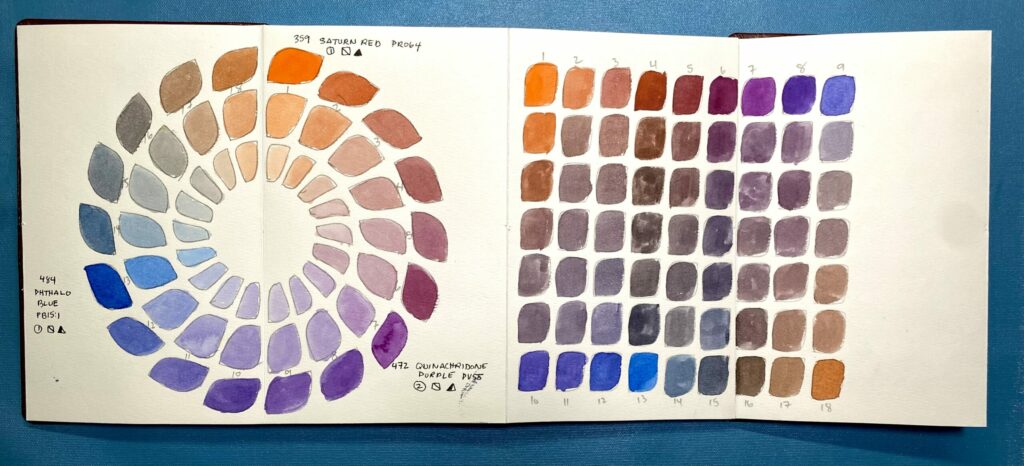Before you start ColourJotting, you will need to decide on the paper or book you will be using to record your colour-mixing journey. We recommend using good-quality watercolour art books for your ColourJotting, because the books will open flat and the pages won’t buckle. A good reference book will be handled a lot, so make sure it has a durable binding.
Each ColourJot Template is a 2-part stencil that is traced and repositioned to make both a colour wheel and a colour grid. The template’s 8″ size provides a variety of layout options to fit common sizes of sketchbooks or watercolour journals. Here are examples of 4-page, 2-page, and 1-page spreads.
Etchr Medium Accordion Watercolour Sketchbook – a class favourite.
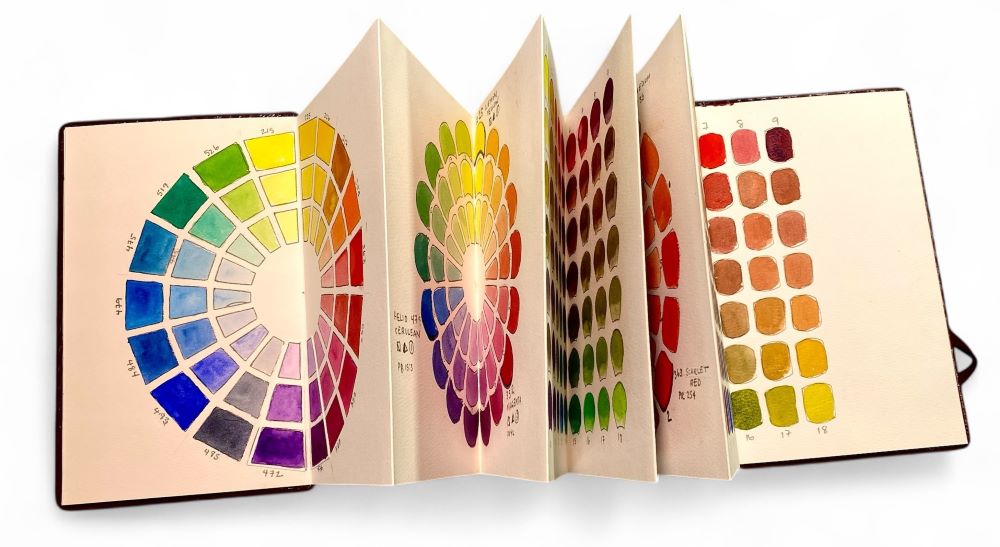
A5 Watercolour Journal 5.5” x 8.5” The stencils will fill a two-page spread format that is perfect for art journaling and compact storage.
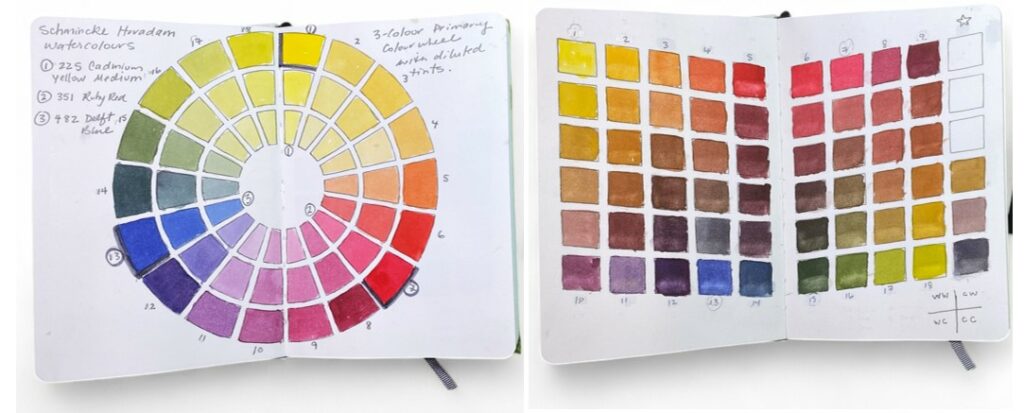
Etchr Watercolour Sketchbook 8×8″ Square. A nice way to flip through your reference book and see just the colour circle and colour grid on their own. Compact space with not much room for writing, so it is all about colour.
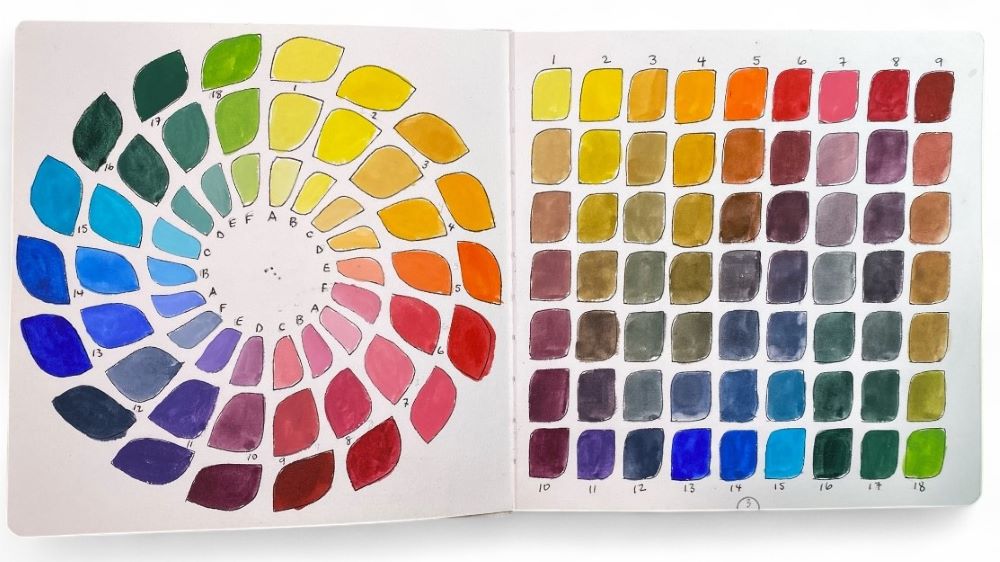
A4 Watercolour Sketchbook 8.5×11” or 9×12”. The stencils fill a full page of a 9 x 12 sketchbook. The larger format is better for teaching and sharing and it is a great coffee-table book or studio reference.
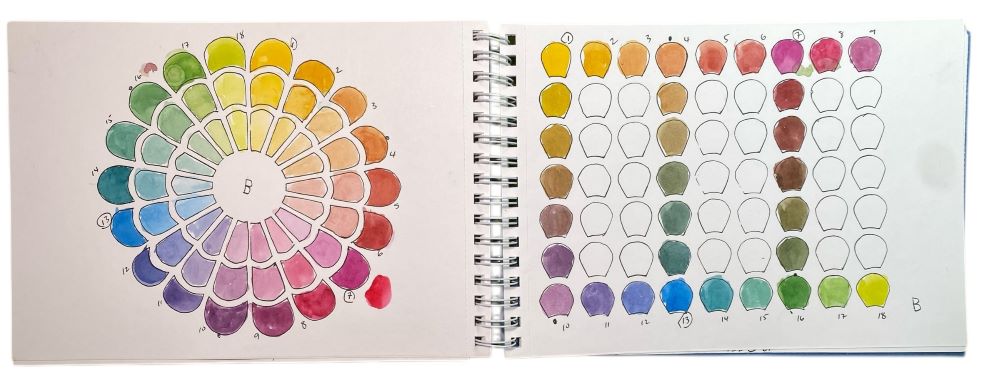
11×14″ Watercolour Paper Pad or (Canvas Board or Pad). This is a great size if you want to make colour reference posters for your studio, store, or classroom.
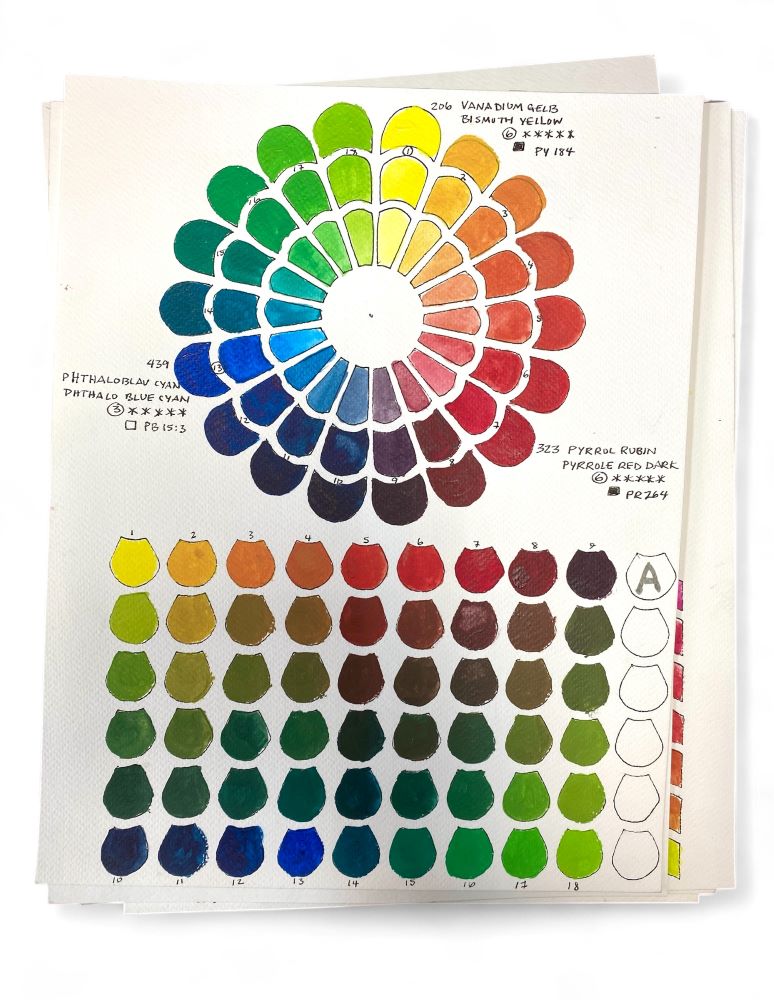
About the Template Designs
ColourJot templates come in a variety of styles to ensure participants have novel ways to customize their ColourJot art journals. The templates are similar enough to keep the process simple and repeatable, while making comparative colour mixes easy to track and review. It does not matter where you start; just pick a design that appeals to you. One stencil may be used repeatedly, or you can collect, share, and trade the templates.
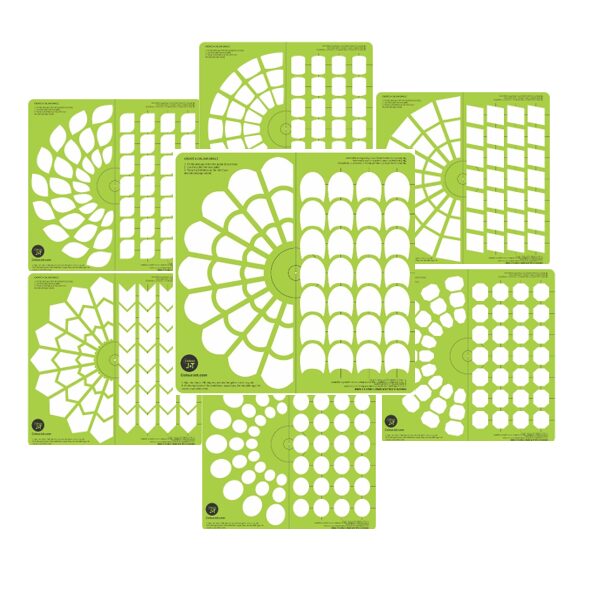
ColourJotting Builds Skills
In addition to colour-mixing practice, the designs and process will help artists learn to control water dilution, gain brush control and experiment with application techniques.
Jot means to quickly take note. The marker outline will provide enough structure to hold the design and quickly capture your colour. An attractive and consistent layout will create a keepsake and useful reference tool.
Some designs are simple; the ovals are quick to trace and paint. Other designs are more of a challenge. The chevron, for example, has peaks and square corners that may take more time and care to complete. There are recommended brush shapes listed for each stencil, but these are merely suggestions to help you get started and build skills. Use the brushes you have on hand to start.
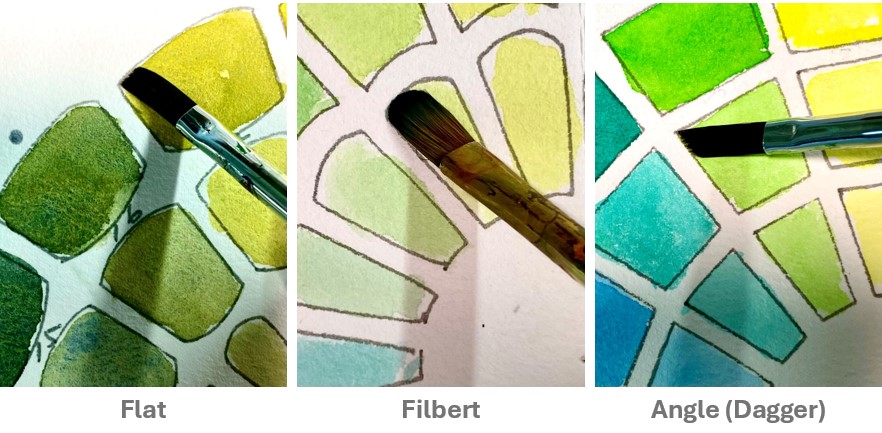
Perfectionism is not part of the ColourJot process – in fact, it is overrated. We are skill-building and not creating perfect colouring books, so staying within the lines or painting exactly to the line is not essential. This is about colour mixing and jotting notes about our progress. Let the black outline provide the structure, and the colour provides the beauty. The fact that it is handmade is part of the charm.
